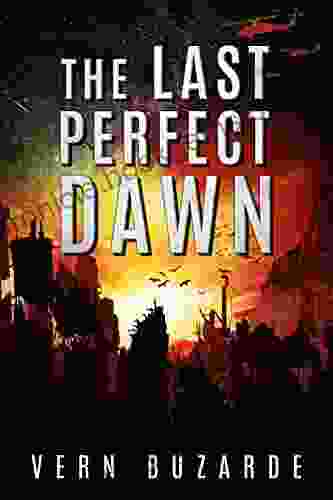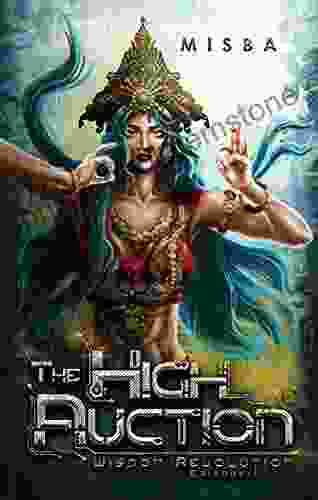How to Think Like a Great Graphic Designer: A Comprehensive Guide

: The Power of Graphic Design Thinking
Graphic design is an art form that combines creativity, problem-solving, and technical skills to convey ideas and information visually. Great graphic designers possess a unique mindset that enables them to approach design challenges with a high level of ingenuity and effectiveness. Their ability to think strategically, adapt to diverse contexts, and produce aesthetically appealing and functional designs sets them apart from the mediocre.
4.3 out of 5
| Language | : | English |
| File size | : | 365 KB |
| Text-to-Speech | : | Enabled |
| Screen Reader | : | Supported |
| Enhanced typesetting | : | Enabled |
| Print length | : | 250 pages |
In this comprehensive guide, we will delve into the thought processes and strategies that empower great graphic designers. By understanding their mindset, techniques, and approaches, you can elevate your design thinking and produce exceptional visuals that captivate audiences and achieve desired results.
Chapter 1: The Mindset of a Great Graphic Designer
1.1 Curiosity and Exploration
Great graphic designers are insatiable learners who continually seek knowledge and inspiration from a wide range of sources. They immerse themselves in various disciplines, such as art, photography, typography, and even psychology, to expand their perspectives and cultivate a rich pool of ideas. Their curiosity fuels their creativity and enables them to develop innovative solutions to design challenges.
1.2 Problem-Solving Orientation
Graphic design is essentially about solving visual communication problems. Great designers approach each project with a problem-solving mindset, meticulously analyzing the target audience, project objectives, and constraints. They consider both the functional and aesthetic aspects of the design, striving to create solutions that meet the specific needs of their clients and users.
1.3 Empathy and User-Centricity
Understanding the needs, preferences, and behaviors of the target audience is crucial for effective graphic design. Great designers go beyond assumptions and conduct extensive research to gain insights into their audience's perspectives. They empathize with their users, considering their motivations, experiences, and expectations to ensure that their designs resonate with them.
1.4 Collaboration and Communication
Great graphic designers recognize the value of collaboration and actively seek input from clients, colleagues, and other stakeholders. They communicate their ideas clearly and effectively, ensuring that everyone involved in the project is aligned and working towards a shared vision. This collaborative approach fosters innovation, improves decision-making, and strengthens relationships with clients.
Chapter 2: Creative Problem-Solving Techniques
2.1 Ideation and Brainstorming
Ideation is the process of generating creative ideas and concepts. Great graphic designers employ a range of brainstorming techniques to stimulate their creativity, such as mind mapping, freewriting, and sketching. They encourage divergent thinking, embracing a wide variety of ideas without judgment, and foster a collaborative environment where ideas can be shared, developed, and refined.
2.2 Research and Inspiration
Thorough research and inspiration gathering are essential for informed and creative decision-making. Great designers study existing designs, explore relevant trends, and draw inspiration from diverse sources to expand their knowledge base and identify innovative approaches. They immerse themselves in the project's context, immersing themselves in the brand's identity, target audience, and industry best practices to ensure that their designs are relevant and impactful.
2.3 Iterative Design and Refinement
Great graphic designers rarely arrive at perfect solutions on their first attempt. Instead, they adopt an iterative design process, creating multiple variations and exploring different options. They iterate on their designs based on feedback and testing, refining them incrementally until they achieve the desired outcome. This iterative approach allows them to experiment with different ideas, optimize their designs for usability and aesthetics, and reach the best possible result.
Chapter 3: The Role of Aesthetics and Usability
3.1 Design Principles and Elements
Great graphic designers have a deep understanding of design principles and elements, such as color theory, typography, composition, and layout. They use these principles to create visually appealing and cohesive designs that enhance the user experience. Their mastery of aesthetics enables them to create designs that are not only attractive but also effective in communicating messages and achieving desired outcomes.
3.2 Functionality and Usability
While aesthetics are important, great graphic designers never compromise usability. They design with the user's needs in mind, ensuring that their creations are accessible, easy to navigate, and meet functional requirements. They consider factors such as readability, clarity, information hierarchy, and user flow to create designs that facilitate effortless interaction and intuitive use.
3.3 Storytelling and Emotional Connection
Effective graphic design goes beyond mere aesthetics; it has the power to evoke emotions and create meaningful connections with the audience. Great graphic designers use their skills to tell stories, convey messages, and elicit desired responses. They understand the psychological impact of visual elements and use them strategically to engage users, build relationships, and drive action.
Chapter 4: The Importance of Innovation and Evolution
4.1 Experimentation and Risk-Taking
Great graphic designers are not afraid to experiment and take risks in their work. They challenge the status quo, push creative boundaries, and explore unconventional approaches to find innovative solutions. Their willingness to experiment allows them to create groundbreaking designs that stand out from the crowd and make a lasting impact.
4.2 Adaptation and Evolution
The graphic design industry is constantly evolving, with new trends and technologies emerging all the time. Great graphic designers recognize the importance of adaptation and continuous learning. They stay abreast of the latest innovations, embrace new tools and techniques, and adapt their skills to meet changing demands. This adaptability enables them to stay relevant and continue producing exceptional designs that meet the needs of the evolving market.
4.3 Sustainability and Social Responsibility
In today's world, sustainability and social responsibility have become increasingly important considerations in graphic design. Great designers recognize that their work
4.3 out of 5
| Language | : | English |
| File size | : | 365 KB |
| Text-to-Speech | : | Enabled |
| Screen Reader | : | Supported |
| Enhanced typesetting | : | Enabled |
| Print length | : | 250 pages |
Do you want to contribute by writing guest posts on this blog?
Please contact us and send us a resume of previous articles that you have written.
 Best Book
Best Book Page Flip
Page Flip Bookshelf
Bookshelf Literary loom
Literary loom Chapter
Chapter Bookish
Bookish PageTurner
PageTurner Bibliophile
Bibliophile Story
Story Inkwell
Inkwell Bookworm
Bookworm Labyrinth
Labyrinth Plot Twist
Plot Twist Prose
Prose Paperback
Paperback Storyteller
Storyteller Sanctuary
Sanctuary Fiction
Fiction Reading
Reading Chronicle
Chronicle Read
Read Dean Heath
Dean Heath Giovanni Antonio Canal
Giovanni Antonio Canal Graham Hutchins
Graham Hutchins Cynthia D Bittinger
Cynthia D Bittinger Rob Goss
Rob Goss Bernd Schubert
Bernd Schubert Nicole Mones
Nicole Mones Bill Barich
Bill Barich Elizabeth Rusch
Elizabeth Rusch Zain Deane
Zain Deane Stephen Laskevitch
Stephen Laskevitch Kristen Stein
Kristen Stein Wilbur Smith
Wilbur Smith Chan Park
Chan Park David Marusek
David Marusek Patrice Balark
Patrice Balark Stephen Mack Jones
Stephen Mack Jones Ashley Kahn
Ashley Kahn Toya Banks
Toya Banks Stacey Weaver
Stacey Weaver David Brendel
David Brendel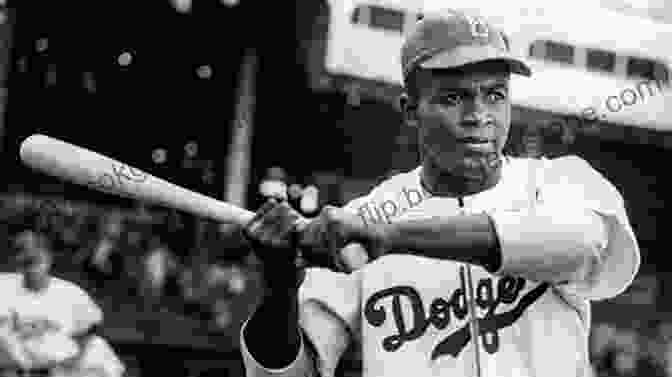 Jackie Robinson
Jackie Robinson Ellen Ward Lopez
Ellen Ward Lopez Andre Norton
Andre Norton K Nicole
K Nicole Eric Scigliano
Eric Scigliano Alexandra Billings
Alexandra Billings Giovanni Battista Piranesi
Giovanni Battista Piranesi Jade Snow Wong
Jade Snow Wong John Mierau
John Mierau Mary S Lovell
Mary S Lovell Plewaynar
Plewaynar Francis Parkman
Francis Parkman Richard Wright
Richard Wright T A Mclaughlin
T A Mclaughlin Kennedy King
Kennedy King Penny Brown
Penny Brown Darien Gee
Darien Gee Ferial Youakim
Ferial Youakim Adam Gidwitz
Adam Gidwitz Rachel Aukes
Rachel Aukes Christopher Hinz
Christopher Hinz Sally Field
Sally Field Ricardo S Sanchez
Ricardo S Sanchez Jessica Mellow
Jessica Mellow Matthew O Brien
Matthew O Brien Keith Whiting
Keith Whiting Abdulrazak Gurnah
Abdulrazak Gurnah Robert C Cumbow
Robert C Cumbow Dana R Jones
Dana R Jones Wendy Holden
Wendy Holden Rob Zombie
Rob Zombie Abby Denson
Abby Denson Susan J Cobb
Susan J Cobb Susannah Shaw
Susannah Shaw James Rosone
James Rosone Vivian Jeanette Kaplan
Vivian Jeanette Kaplan Bill Sherk
Bill Sherk Adam Abraham
Adam Abraham Karen Rose Smith
Karen Rose Smith Jolyn Parker
Jolyn Parker Maureen Klovers
Maureen Klovers Maurice Delafosse
Maurice Delafosse Beverly Grondin
Beverly Grondin Julius B Fleming Jr
Julius B Fleming Jr Jenny Pentland
Jenny Pentland Julia Cameron
Julia Cameron David Farmer
David Farmer Tara Conklin
Tara Conklin Hieronymus Bosch
Hieronymus Bosch Chandra Blumberg
Chandra Blumberg Julie Hoverson
Julie Hoverson Alec Waugh
Alec Waugh Abbe Rolnick
Abbe Rolnick Roy Lang
Roy Lang Ilarion Merculieff
Ilarion Merculieff Naomi Finley
Naomi Finley Sandra Shpilberg
Sandra Shpilberg Adam Troy Castro
Adam Troy Castro Etienne De Backer
Etienne De Backer Jed Perl
Jed Perl John Jennings
John Jennings Zan
Zan Hans Holbein
Hans Holbein Ivy Laika
Ivy Laika Beatriz Williams
Beatriz Williams John Schreiner
John Schreiner Dynamo
Dynamo R B Herkes
R B Herkes Randa Jarrar
Randa Jarrar Carolyn Schlam
Carolyn Schlam David Kidd
David Kidd Roman Plesky
Roman Plesky Andrew Farago
Andrew Farago Sudhir Hazareesingh
Sudhir Hazareesingh William Blackwell
William Blackwell Mary Norris
Mary Norris Giorgio Vasari
Giorgio Vasari Adam Mayers
Adam Mayers Hirokazu Miyazaki
Hirokazu Miyazaki John Sandford
John Sandford Kirsten Mckenzie
Kirsten Mckenzie Ben Bova
Ben Bova Abby Hoy
Abby Hoy Wilma Roos
Wilma Roos Le Roy H Appleton
Le Roy H Appleton Olita Design
Olita Design Agathe Trapp
Agathe Trapp Jamie Wesley
Jamie Wesley Michael Harkins
Michael Harkins Dennis Ross
Dennis Ross April Vollmer
April Vollmer Tiffany Dufu
Tiffany Dufu Josh Levine
Josh Levine Carol Hayes
Carol Hayes Charles Solomon
Charles Solomon Yvonne Navarro
Yvonne Navarro Zara Thorne
Zara Thorne Michael Reardon
Michael Reardon Sam Gennawey
Sam Gennawey Laura Lam
Laura Lam Rob Sinclair
Rob Sinclair Dean Wesley Smith
Dean Wesley Smith Kim Michele Richardson
Kim Michele Richardson Abdul El Sayed
Abdul El Sayed Jenny Smith
Jenny Smith Robert H Ruby
Robert H Ruby Michael Atavar
Michael Atavar Rohan M Vider
Rohan M Vider Deborah Levy
Deborah Levy Rick Thompson
Rick Thompson James Webb
James Webb John Banville
John Banville Thami Prusent
Thami Prusent Philip Mould
Philip Mould Joanna Goss
Joanna Goss H P Lovecraft
H P Lovecraft Dick Cluster
Dick Cluster Chelsea Handler
Chelsea Handler Ada Hoffmann
Ada Hoffmann Ed Andreychuk
Ed Andreychuk Sarah Mccartney
Sarah Mccartney Suzanne Ostersmith
Suzanne Ostersmith Keith Van Sickle
Keith Van Sickle Traci Bautista
Traci Bautista Adam Nayman
Adam Nayman Neil Macfarquhar
Neil Macfarquhar Helen Mccarthy
Helen Mccarthy Inman Learning
Inman Learning Gilad Segev
Gilad Segev Arthur Schopenhauer
Arthur Schopenhauer Jim Butcher
Jim Butcher Douglas R Hall
Douglas R Hall Jim Korkis
Jim Korkis Keisha J
Keisha J James G Speight
James G Speight Tim Mackintosh Smith
Tim Mackintosh Smith Illustrated Edition Kindle Edition
Illustrated Edition Kindle Edition David Bergsland
David Bergsland Clare Walker Leslie
Clare Walker Leslie Dominik Imseng
Dominik Imseng Jacqueline Woodson
Jacqueline Woodson Gabrielle Reece
Gabrielle Reece Paolo Hewitt
Paolo Hewitt Gordon Theisen
Gordon Theisen Rufus Mcgaugh
Rufus Mcgaugh Adolf Hungry Wolf
Adolf Hungry Wolf Todd Wassel
Todd Wassel Dr Steven Gardner
Dr Steven Gardner Sean Oswald
Sean Oswald Timothy F Geithner
Timothy F Geithner Eve Brown Waite
Eve Brown Waite Jeff Brown
Jeff Brown Amy C Balfour
Amy C Balfour Lynn Austin
Lynn Austin Kassandra Lamb
Kassandra Lamb Ilana Benady
Ilana Benady Adrian Tchaikovsky
Adrian Tchaikovsky William Joseph Hill
William Joseph Hill George Stietz
George Stietz Adam Selzer
Adam Selzer Italo Svevo
Italo Svevo Catherine V Holmes
Catherine V Holmes Dennis Vanderkerken
Dennis Vanderkerken Onethree L
Onethree L Julia Alvarez
Julia Alvarez Patrick Leigh Fermor
Patrick Leigh Fermor Marco Polo
Marco Polo Michelle Houts
Michelle Houts Addison Jane
Addison Jane Dan Tranberg
Dan Tranberg David Robbins
David Robbins Malcolm Guite
Malcolm Guite James D Prescott
James D Prescott Eric Little
Eric Little Alvin Eng
Alvin Eng Tanya Angelova
Tanya Angelova Anne Marie O Connor
Anne Marie O Connor Melissa Maker
Melissa Maker Ediciones Puentesdeluz
Ediciones Puentesdeluz Olivia Laing
Olivia Laing Wolf Moon
Wolf Moon Helen Keller
Helen Keller Nicola Griffith
Nicola Griffith Mary Jane Hall
Mary Jane Hall Debby Burnett Safranski
Debby Burnett Safranski L Andrew Cooper
L Andrew Cooper Friedrich Glauser
Friedrich Glauser Irvin D Yalom
Irvin D Yalom Eloise Moran
Eloise Moran Adam Gamble
Adam Gamble Adina Hoffman
Adina Hoffman Ilise Benun
Ilise Benun Allison Levy
Allison Levy Asia Monique
Asia Monique Maturin Murray Ballou
Maturin Murray Ballou Lisa Jones
Lisa Jones Rod Kluzki
Rod Kluzki Max Boot
Max Boot Julia C Tobey
Julia C Tobey Actus
Actus Andrea Linett
Andrea Linett Melissa Gilbert
Melissa Gilbert Adam Frankel
Adam Frankel Dale Armstrong
Dale Armstrong Edgar Bergen
Edgar Bergen Tessa Dare
Tessa Dare Tiana Laveen
Tiana Laveen Patrick Bade
Patrick Bade Kal Spriggs
Kal Spriggs Ira Sukrungruang
Ira Sukrungruang Joe Cartwright
Joe Cartwright Jennifer Lilya
Jennifer Lilya Katherine A S Sibley
Katherine A S Sibley Debbie Millman
Debbie Millman Jan Caeyers
Jan Caeyers Dani Cavallaro
Dani Cavallaro Robin Roberts
Robin Roberts William Friedkin
William Friedkin Robert Beverly Hale
Robert Beverly Hale Sue Hiepler
Sue Hiepler Candi B
Candi B Fiona Stocker
Fiona Stocker Engineer Greg
Engineer Greg Lynda Williams
Lynda Williams Connie Pombo
Connie Pombo Pixie Unger
Pixie Unger Lisa Scottoline
Lisa Scottoline Emery C F Bryant
Emery C F Bryant Fritz Leiber
Fritz Leiber Sam Zell
Sam Zell Jami Attenberg
Jami Attenberg Adriana Licio
Adriana Licio Walter E Little
Walter E Little Kendra Sumter
Kendra Sumter Jan Hawkins
Jan Hawkins M H Johnson
M H Johnson Lee Mylne
Lee Mylne Christopher G Nuttall
Christopher G Nuttall Deesha Philyaw
Deesha Philyaw Rebecca Frankel
Rebecca Frankel Tacarra
Tacarra Theodore Sturgeon
Theodore Sturgeon Amanda Milo
Amanda Milo Drew Harrison
Drew Harrison David Mitchell
David Mitchell Kenneth Kee
Kenneth Kee Jeremy Bai
Jeremy Bai Rachel Shirley
Rachel Shirley Gregory Mattix
Gregory Mattix Christina Sharpe
Christina Sharpe Frank M Rines
Frank M Rines Theo Coster
Theo Coster Gloria Naylor
Gloria Naylor Mary Hollingsworth
Mary Hollingsworth Elizabeth George
Elizabeth George Anne Gillain
Anne Gillain Angela Dejong
Angela Dejong Abe Streep
Abe Streep Paul Clayton
Paul Clayton Abby Lee Miller
Abby Lee Miller Adam Fletcher
Adam Fletcher Samuel Best
Samuel Best Alyson Sheldrake
Alyson Sheldrake Anne Green Gilbert
Anne Green Gilbert Jintana Rattanakhemakorn
Jintana Rattanakhemakorn James Omoghosa Abu
James Omoghosa Abu Tom Gose
Tom Gose Diana Cooper
Diana Cooper Rochelle Spencer
Rochelle Spencer Erika Mailman
Erika Mailman Adam Rogers
Adam Rogers Fritz Lang
Fritz Lang Virginia Lia
Virginia Lia Natasha Knight
Natasha Knight Angela May
Angela May Thomas Sparr
Thomas Sparr Jorge J E Gracia
Jorge J E Gracia Vanessa Hua
Vanessa Hua Miriam Wenger Landis
Miriam Wenger Landis Nghi Vo
Nghi Vo Rita Goldberg
Rita Goldberg Wooden Leg
Wooden Leg Bob Miglani
Bob Miglani Elizabeth Leane
Elizabeth Leane Tom Delonge
Tom Delonge Amir Tsarfati
Amir Tsarfati David Annandale
David Annandale Garth Stein
Garth Stein Talek Nantes
Talek Nantes Lina Chang
Lina Chang Franklyn Sills
Franklyn Sills David Larocca
David Larocca Alexander Simpson
Alexander Simpson S K Hardy
S K Hardy Abhirup Bhattacharya
Abhirup Bhattacharya Kelle Hampton
Kelle Hampton Eric Van Lustbader
Eric Van Lustbader Julian E Zelizer
Julian E Zelizer Robert J Serling
Robert J Serling David Bayles
David Bayles Viajo Logo Existo
Viajo Logo Existo Danica Winters
Danica Winters Adam Begley
Adam Begley Robin Gaby Fisher
Robin Gaby Fisher Adrian Nicole Leblanc
Adrian Nicole Leblanc John Leighton
John Leighton H Terrell Griffin
H Terrell Griffin Stephen Greenblatt
Stephen Greenblatt Peter Lasalle
Peter Lasalle Kristine Kathryn Rusch
Kristine Kathryn Rusch John Scherber
John Scherber Books Club
Books Club Laure Paillex
Laure Paillex Brin Jonathan Butler
Brin Jonathan Butler Tao Wong
Tao Wong Ross King
Ross King Anja Grebe
Anja Grebe Sadaf Farooqi
Sadaf Farooqi Julie Gilbert Pollard
Julie Gilbert Pollard Hiram Garcia
Hiram Garcia Mallory Monroe
Mallory Monroe Connie Ann Valenti
Connie Ann Valenti Valeria Vegas
Valeria Vegas Nancy French
Nancy French Maggie Price
Maggie Price Peter Dendle
Peter Dendle Douglas Mccall
Douglas Mccall Stephen Quiller
Stephen Quiller Helen Fremont
Helen Fremont Pedro Mendes
Pedro Mendes Peter Kazaks
Peter Kazaks Adam Tetlow
Adam Tetlow Mercedes Lackey
Mercedes Lackey Kerry Colburn
Kerry Colburn A Hauser
A Hauser Tom Brierton
Tom Brierton Shelli Marie
Shelli Marie Pamela Craft
Pamela Craft Ernst Haeckel
Ernst Haeckel Isabella Decarlo
Isabella Decarlo David Feltmate
David Feltmate Loretta Krupinski
Loretta Krupinski Barbara Laine
Barbara Laine Thomas Wallace Knox
Thomas Wallace Knox Jonathan Mooney
Jonathan Mooney Manuel Lima
Manuel Lima Abigail Thomas
Abigail Thomas Henry Cejudo
Henry Cejudo Caius A Mauricette
Caius A Mauricette Danie Ware
Danie Ware Wolfgang Daunicht
Wolfgang Daunicht Adam Skolnick
Adam Skolnick Marissa Cox
Marissa Cox Brian Jay Jones
Brian Jay Jones Adrian Shaughnessy
Adrian Shaughnessy Stephanie Peterson Jones
Stephanie Peterson Jones Nat Segaloff
Nat Segaloff Nick Cook
Nick Cook Ivan So
Ivan So J A Taylor
J A Taylor Jack L Grossman
Jack L Grossman Seabury Quinn
Seabury Quinn Evan Currie
Evan Currie Tom Von Logue Newth
Tom Von Logue Newth Ashley C Ford
Ashley C Ford Tony Hefner
Tony Hefner Malaka Gharib
Malaka Gharib Mark Amerika
Mark Amerika Aaron Linsdau
Aaron Linsdau Hope Jahren
Hope Jahren Lamar Neal
Lamar Neal Carolyn Burke
Carolyn Burke Yvonne Tasker
Yvonne Tasker Timothy P Spira
Timothy P Spira Peter T Deutermann
Peter T Deutermann Michael H Hodges
Michael H Hodges Ruy Castro
Ruy Castro Karen Reed
Karen Reed Abby Stein
Abby Stein Cavan Scott
Cavan Scott Christopher Densmore
Christopher Densmore Enjeela Ahmadi Miller
Enjeela Ahmadi Miller Michael Langlois
Michael Langlois Rob Zabrecky
Rob Zabrecky Pam Grier
Pam Grier Brian Yansky
Brian Yansky Kathleen Grissom
Kathleen Grissom Polina Traore Dana Kaledin
Polina Traore Dana Kaledin Jeffrey Kluger
Jeffrey Kluger E J Koh
E J Koh Victoria Aveline
Victoria Aveline Jessica Dunham
Jessica Dunham Halle Mcqueen
Halle Mcqueen Albert Alhadeff
Albert Alhadeff Morgan Richard Olivier
Morgan Richard Olivier Peter Tonguette
Peter Tonguette John Kenneth Muir
John Kenneth Muir Ted Orland
Ted Orland Margery M Heffron
Margery M Heffron Cheng Yan
Cheng Yan Diana Vreeland
Diana Vreeland Charles Scott
Charles Scott Angela Y Davis
Angela Y Davis Charles Darwin
Charles Darwin Deyan Sudjic
Deyan Sudjic Peter C Smith
Peter C Smith Michael Showalter
Michael Showalter Rodney Barker
Rodney Barker Adriana Trigiani
Adriana Trigiani Terry Schott
Terry Schott Anand Prahlad
Anand Prahlad Linda Hartley
Linda Hartley Craig Martelle
Craig Martelle John Annerino
John Annerino Roxane Gay
Roxane Gay Denese A Rodgers
Denese A Rodgers Carla Rahn Phillips
Carla Rahn Phillips Ben Pester
Ben Pester Jessi Dunnagan
Jessi Dunnagan Makoto Fujimura
Makoto Fujimura Max Porter
Max Porter Sheila Heti
Sheila Heti Chencia C Higgins
Chencia C Higgins Michael Massen
Michael Massen Brian L Evans
Brian L Evans Eileen Cronin
Eileen Cronin Gabe Baltazar
Gabe Baltazar Charles River Editors
Charles River Editors Soraya Altorki
Soraya Altorki Chris Legaspi
Chris Legaspi Roz Goldfarb
Roz Goldfarb Mike Myers
Mike Myers Peter Genovese
Peter Genovese Tim Mulliner
Tim Mulliner Lara Shannon
Lara Shannon Craig A Falconer
Craig A Falconer Alan K Rode
Alan K Rode Marian Leah Knapp
Marian Leah Knapp Lucille Ball
Lucille Ball Lejuan James
Lejuan James Vova Bo
Vova Bo Irene Eizen
Irene Eizen Carlos L De La Rosa
Carlos L De La Rosa Yochanan Fein
Yochanan Fein Chantal V Johnson
Chantal V Johnson Tamara Marie
Tamara Marie Edward K Kaplan
Edward K Kaplan Davar Ardalan
Davar Ardalan Alice Childress
Alice Childress Adrian Matejka
Adrian Matejka Lilly Dancyger
Lilly Dancyger Michael Newberry
Michael Newberry Karen Osborne
Karen Osborne Sam Wasson
Sam Wasson Ace Atkins
Ace Atkins Emily Design
Emily Design Tw Neal
Tw Neal Nicolas Forgue
Nicolas Forgue Scott Sigler
Scott Sigler Laurence Parent
Laurence Parent C S Friedman
C S Friedman Jennifer S Alderson
Jennifer S Alderson Amarie Avant
Amarie Avant Jackie Faasisila
Jackie Faasisila David M Buerge
David M Buerge Alice Dews
Alice Dews Errol Fuller
Errol Fuller M Jacobs
M Jacobs Amber Share
Amber Share Alexander Van Millingen
Alexander Van Millingen Peter Schwenger
Peter Schwenger Adam Phillips
Adam Phillips Stephen Flanagan
Stephen Flanagan Jean Daive
Jean Daive April Baker Bell
April Baker Bell T A Williams
T A Williams Ian Nathan
Ian Nathan Susan Gaber
Susan Gaber Aaron Lansky
Aaron Lansky Barry Hatton
Barry Hatton Jed Alger
Jed Alger Kindle Interactive Edition
Kindle Interactive Edition Eerie Von
Eerie Von Colin Odell
Colin Odell Jay Narayan
Jay Narayan Vern Buzarde
Vern Buzarde Adolph L Reed
Adolph L Reed Chuck Wendig
Chuck Wendig Misba
Misba Peter Jenkins
Peter Jenkins Wahida Clark
Wahida Clark Elly Thuy Nguyen
Elly Thuy Nguyen Chris Patten
Chris Patten Benjamin Kerstein
Benjamin Kerstein Bill O Neill
Bill O Neill Maurizio Onnis
Maurizio Onnis Esther Henry
Esther Henry Ray Bradbury
Ray Bradbury Jeremy Zenith
Jeremy Zenith John Bester
John Bester Nancy Skolos
Nancy Skolos Torey L Hayden
Torey L Hayden Sue Kim
Sue Kim John Richardson
John Richardson Fx Holden
Fx Holden Frederick Levy
Frederick Levy The Total Travel Guide Company
The Total Travel Guide Company Rusty Ferguson
Rusty Ferguson Aarti Namdev Shahani
Aarti Namdev Shahani Sheila Williams
Sheila Williams Helen Zia
Helen Zia Stevie Salas
Stevie Salas Kathleen Rooney
Kathleen Rooney Gabriel Levin
Gabriel Levin Michael Dimercurio
Michael Dimercurio Sandra Staple
Sandra Staple Liesbet Collaert
Liesbet Collaert Shane Shepherd
Shane Shepherd Annette Marie
Annette Marie Hashim Akib
Hashim Akib Nato Thompson
Nato Thompson Lawrence Winkler
Lawrence Winkler Ruth Fidler
Ruth Fidler Abbie Hoffman
Abbie Hoffman Lisa Leonard
Lisa Leonard Brian Lockman
Brian Lockman Carmine Rossi
Carmine Rossi Jared Clemons
Jared Clemons John Biggar
John Biggar Richard Schickel
Richard Schickel Adam Fortunate Eagle
Adam Fortunate Eagle Richard Schweid
Richard Schweid Josh Law
Josh Law Cheryl Briggs
Cheryl Briggs Aaron Sanchez
Aaron Sanchez Stuart Smith
Stuart Smith
Light bulbAdvertise smarter! Our strategic ad space ensures maximum exposure. Reserve your spot today!

 Herb SimmonsUnstoppable Litrpg Adventure Class Shift: A Journey of Courage, Strategy, and...
Herb SimmonsUnstoppable Litrpg Adventure Class Shift: A Journey of Courage, Strategy, and...
 Pablo NerudaUnveiling the Fifth Chinese Daughter: A Journey of Identity, Empowerment, and...
Pablo NerudaUnveiling the Fifth Chinese Daughter: A Journey of Identity, Empowerment, and... Joel MitchellFollow ·3.8k
Joel MitchellFollow ·3.8k Gabriel HayesFollow ·16.9k
Gabriel HayesFollow ·16.9k Brennan BlairFollow ·12.1k
Brennan BlairFollow ·12.1k Grant HayesFollow ·12.8k
Grant HayesFollow ·12.8k Dwight BlairFollow ·5.4k
Dwight BlairFollow ·5.4k Oscar WildeFollow ·5.5k
Oscar WildeFollow ·5.5k Federico García LorcaFollow ·2.8k
Federico García LorcaFollow ·2.8k Chandler WardFollow ·17.3k
Chandler WardFollow ·17.3k
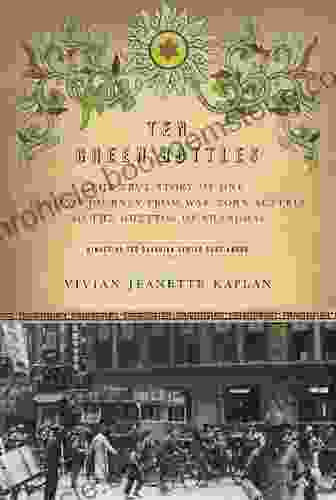
 Allen Ginsberg
Allen GinsbergThe True Story of One Family's Journey from War-Torn...
In the heart of Europe,...
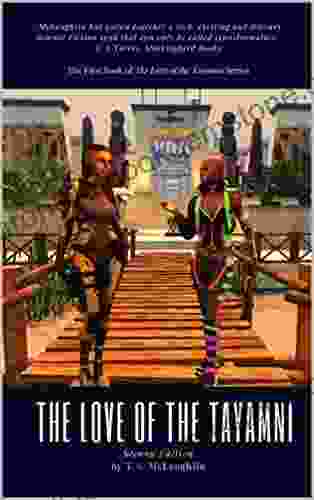
 Noah Blair
Noah BlairThe Enduring Love of The Tayamni Second Edition: A...
The Tayamni...

 Frank Mitchell
Frank MitchellThree Young Mothers And Their Extraordinary Story Of...
In the face of adversity,...

 Angelo Ward
Angelo WardReality Check: The Empire Corps Unmasked
In the labyrinthine realm of global...
4.3 out of 5
| Language | : | English |
| File size | : | 365 KB |
| Text-to-Speech | : | Enabled |
| Screen Reader | : | Supported |
| Enhanced typesetting | : | Enabled |
| Print length | : | 250 pages |









